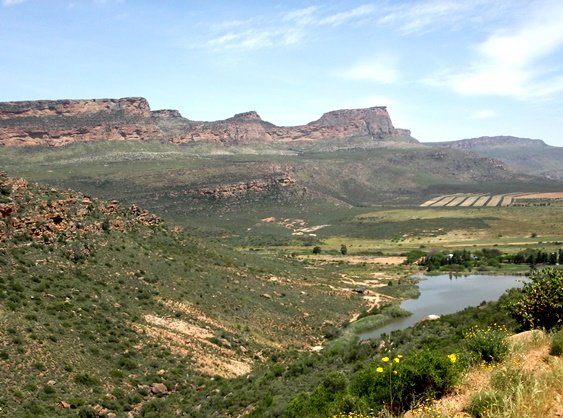Gifberg dam

Author: Ivan Lätti
Photographer: Ivan Lätti
The farm dam is often key to survival of the farm. The capacity of a reservoir and its catchment area determine the scope of its usage. Often a substantial investment for providing drinking water for human and livestock consumption, irrigation of commercial crops, vegetable gardens, fish farming or other purposes, it inevitably serves more widely.
Unintended additional functionality involves users that arrive without invitation. The dam becomes home to amphibians like frogs, reptiles like terrapins, millions of insects, small (and sometimes bigger) mammals not forming part of the farmer’s stock and untold bird visitors staying briefly or for long periods.
People swim, row, rest, fish, braai, canoodle, plan and reflect here, making the dam a key social feature of farming or village lifestyle.
The big dams, usually in rivers, are community, municipality or higher order governmental projects requiring environmental planning, big capital and expert management. Even the new farm dam these days has to meet legal, engineering and environmental requirements.
The leaking dam is a perennial headache, the collapsed wall during a flood much more than a trivial ache. New dams or the raising of walls do appear when planning and capital allow, but constraints of topography also limit additional projects in developed areas.
Limnology, the study of inland aquatic ecosystems, is important in the management of silting, mineralisation and eutrophication of such water bodies. Eutrophication is the process by which a body of water becomes enriched in dissolved nutrients (such as phosphates and nitrates). Human activity often increases the natural rate of eutrophication, stimulating the excessive growth of certain aquatic plant life. This usually results in the depletion of dissolved oxygen from the water body. Fish deaths and other reduction of the aquatic biodiversity may ensue.
The Hartbeespoort Dam is one that presents enormous challenges in this regard, problems largely unknown in the Gifberg farming environment where this photo was taken (Fuggle and Rabie, 1983; Wikipedia).

